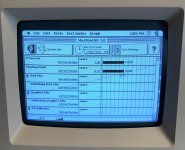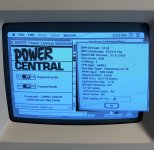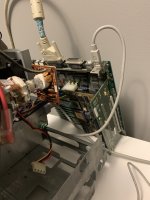K Trueno
Well-known member
Hi, I recently installed a Universal PowerCache in the SE/30 but the "PowerCache" portion doesn't seem to be doing anything. Toggling "PowerMath" seems to increase or decrease performance in Speedometer, but toggling "PowerCache" seems to have no effect (with or without restarts) in between. I've tried empty Control Panel and Extensions and that sort of thing.
Using Speedometer I'm getting around 9 for CPU when it should be around 12..
Running the DayStar PowerDemo shows the line "PowerCache external cache is disabled". I can enable it through the menu, but it seems to do nothing, and once I put the Demo App in the background and come back it seems to toggle back to disabled automatically.
I'm running System 7.1, SE/30, stock rom. Any thoughts? Or could it be a broken PowerCache?
Thanks!
Using Speedometer I'm getting around 9 for CPU when it should be around 12..
Running the DayStar PowerDemo shows the line "PowerCache external cache is disabled". I can enable it through the menu, but it seems to do nothing, and once I put the Demo App in the background and come back it seems to toggle back to disabled automatically.
I'm running System 7.1, SE/30, stock rom. Any thoughts? Or could it be a broken PowerCache?
Thanks!





